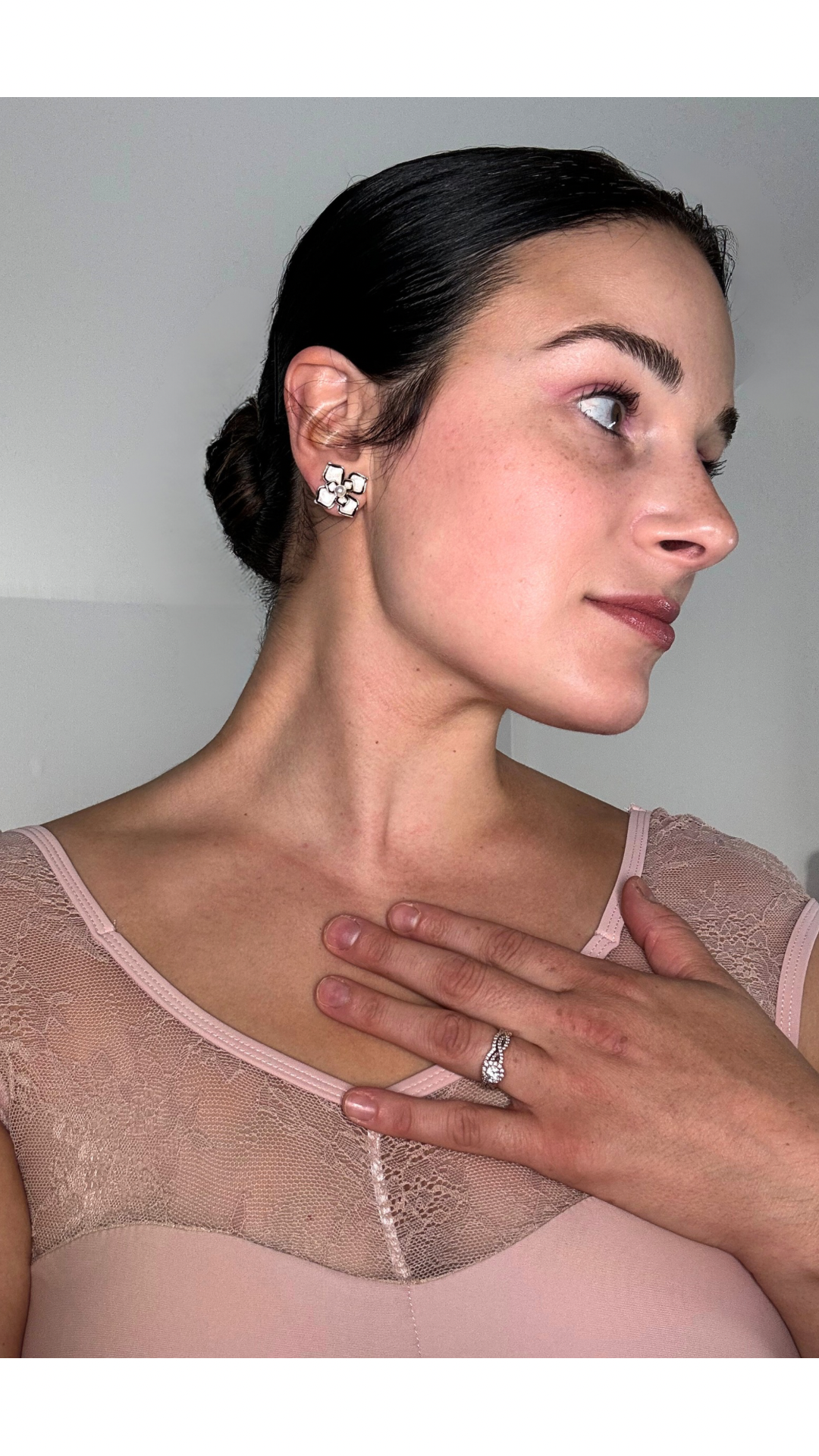Improve your ballet extensions with the Veronica K Method™ of cross-training dancers...
- Veronica K

- Aug 16, 2024
- 4 min read
As a ballet dancer, I always thought stretching was the key to achieving sky high extensions. Having well placed extensions is paramount in the world of dance. The elegance of a beautifully extended leg is not just about aesthetics; it’s a testament to strength, flexibility, and control.
Over the years, I’ve worked tirelessly to develop and refine methods that help dancers maximize their extension potential and decrease injuries. This journey led to the creation of the Veronica K Method™—a unique approach to cross-training dancers that combines myofascial mobility training and muscle energy techniques of improving ballet extensions.
In this article, I’ll delve into why I decided to integrate these powerful techniques into my course and how they can get rid of problems like gripping in the hip, feeling stuck in arabesque or sitting into the hip.
Understanding Myofascial Mobility Training
When discussing ways to improve ballet extensions, we often hear about flexibility and strength, but myofascial mobility is an often-overlooked component.
Myofascial mobility training focuses on the health and pliability of the fascia, the connective tissue that encases muscles. Unlike myofascial release, which aims to alleviate tension and pain by applying pressure, myofascial mobility training is about enhancing the movement quality of the fascia and the muscles it surrounds. It's IDEAL for improving ballet extensions.
The fascia is a critical player in your body’s ability to achieve greater range of motion. When the fascia is tight or restricted, it can limit your flexibility and inhibit the muscles from reaching their full length potential.
By incorporating myofascial mobility training into your routine, you’re essentially preparing the fascia to move more freely, which in turn allows your muscles to stretch and contract more efficiently. This is key for achieving those high, controlled extensions that every dancer strives for.
What are Muscle Energy Techniques?
Muscle energy techniques (METs) are a form of manual therapy that involves the active participation of the dancer.
This technique is closely related to Proprioceptive Neuromuscular Facilitation (PNF) stretching, but with a more focused approach on contracting specific muscle groups to achieve greater flexibility and range of motion. Here’s how it works:
Isometric Contraction: The dancer actively contracts a muscle group against resistance, without changing the length of the muscle. This phase helps to engage the muscle fibers and increase blood flow.
Relaxation and Lengthening: After the contraction, the dancer relaxes the muscle, and during this phase, the muscle is gently stretched to a new lengthened position.
Repeat for Greater Range: By repeating this process, the muscle adapts to the new length, allowing the dancer to achieve greater range of motion and control over their extensions.
The beauty of METs lies in their ability to reset the muscle’s proprioception—its sense of position in space—enabling dancers to safely and effectively extend their range of motion. This technique doesn’t just focus on flexibility but also builds the strength necessary to maintain those new ranges. So long as stretches are not forced, this technique can be both safe and effective for improving ballet extensions.
Integrating Myofascial Mobility and METs: The Veronica K Method™
When I first began developing the Veronica K Method™, my goal was to create a comprehensive approach that both improves ballet dancers technique and prevents injuries simultaneously. I recognized that traditional stretching techniques alone weren’t enough to gain the extensions I desired. While flexibility is essential, without proper mobility and strength, dancers often struggle to control their extensions, leading to instability and potential injuries like snapping hip or piriformis syndrome.
By integrating myofascial mobility training, muscle energy techniques and strength training the Veronica K Method™ offers a balanced approach that addresses all aspects of a dancer’s extension—mobility, strength, and control. The myofascial mobility work prepares the fascia and muscles for deeper stretching, while METs ensure that the muscles can adapt to and maintain these new ranges safely.
This method is not just about increasing the height of extensions; it’s about creating artists that are able to sustain long lasting careers. The combination of these techniques helps dancers achieve not just higher extensions, but extensions that are strong, controlled, and resilient.
Start using the Veronica K Method™ to Improve your Ballet Extensions
The reason behind integrating these two techniques is simple: optimal extensions require more than just flexibility. Dancers need to understand that their fascia, muscles, and nervous system must work together harmoniously to achieve and maintain those picture-perfect extensions. In my extensions course we work on just that.
Ready to take your ballet extensions to the next level? Join my extensions course, where you'll find time friendly routines designed to deliver safe, effective, and sustainable improvements. The program progresses step-by-step, ensuring that you not only enhance your flexibility but also harmonize your fascia, muscles, and nervous system.
Conclusion
Incorporating myofascial mobility training and muscle energy techniques into the Veronica K Method™ has transformed the way dancers achieve and maintain their extensions. This method doesn’t just aim for temporary flexibility gains; it builds a foundation for sustainable and controlled extensions that are critical for every dancer’s performance. If you’re looking to improve your ballet extensions, then start by clicking here!
References
Myers, T. W. (2013). Anatomy Trains: Myofascial Meridians for Manual and Movement Therapists. Elsevier Health Sciences.
Chaitow, L., & DeLany, J. W. (2011). Clinical Application of Neuromuscular Techniques: The Upper Body (Vol. 1). Churchill Livingstone.
Konin, J. G., & Lebsack, D. (2015). Muscle Energy Techniques for Manual Therapists. Human Kinetics.






Comments